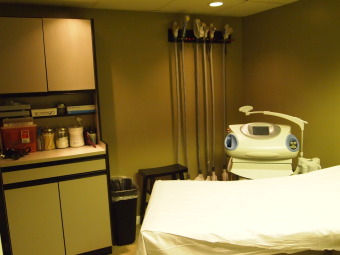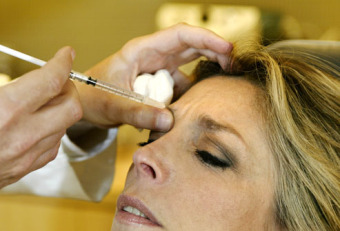By Dr. Jeffrey Segal, MD, JD of Medical Justice
Pause for a second, stop reading this article and close your eyes. Imagine living life as one of the 1.3 million blind people in the United States. Think about how you would access information exchanged over the Internet. For 60-year old New York resident Mindy Jacobsen, this is her reality. She has been blind since birth.
Thanks to the American for Disabilities Act (“ADA”) it is easier for Mindy to navigate around New York City. She can walk sidewalk to sidewalk, hop on a train and live a fully functional life, except when it comes to navigating through the internet.
“You go to a hospital’s website and want to get the pre-op information there, but it isn’t available and if it is, it is in a format we can’t read. Then we have to ask people to read it to us and it becomes such a big deal,” Jacobsen said.
Mindy uses a screen reader to read web pages to herself. It is a helpful tool that allows her to navigate the World Wide Web.
"We have computers that take advantage of the speech kit that is built into all computers. Instead of using that speech kit to show a movie, which it certainly can do, we have a program that uses that speech kit to read the screen. So every time the screen refreshes, the software sends the information to the speech kit and it is read aloud to us,“ Jacobsen said.
Section 508, added to the Rehabilitation Act in 1986 and amended in 1992 and 1998, requires Federal agencies to make their websites accessible to people with disabilities. Outside of Federal agency websites, the United States government policy is to encourage self-regulation of the Internet wherever possible. Only if self-regulation is insufficient does government involvement become necessary.
Self-regulation hasn’t fared well for a handful of public companies nationwide. The most famous and commonly cited case was litigated several years ago, when the National Federation of the Blind filed a suit against the retail giant, Target. The plaintiffs alleged Target's website was not compliant within the outlines of the ADA. National Federation of the Blind v. Target Corp., 452 F. Supp. 2d 946 (N.D. Cal. 2006) asserted the requirements that Title III of the ADA imposes on places of public accommodation also applies to e-commerce websites. The plaintiffs were blind individuals who claimed the Target website discriminated against them since the website did not work well with screen reading software. The case was the first lawsuit applying the ADA to a website that survived a motion to dismiss. The Target case was recently settled out of court for reportedly six million dollars. Quite a sum.
Target is not the only organization whose website triggered a claim under the ADA. Southwest Airlines has been named as a defendant, as well as Twentieth Century Fox and Schering-Plough. It seems reasonable to anticipate a wave of litigation against healthcare providers that, in whole or in part, provide services to disabled individuals.
Title III of the ADA provides, “No individual shall be discriminated against on the basis of disability in the full and equal enjoyment of the goods, services, facilities, privileges, advantages, or accommodations of any place of public accommodation….” 42 U.S.C. § 12182(a). Is a website a public place? There seems to be so strong arguments that a judge could say, "Yes."
"I hope that legislation will come about requiring anyone on the internet to make his or her site accessible. I am dreaming but it is a hope,” Jacobsen said.
Mindy’s hopes are not far off. In July of 2010 the Department of Justice (DOJ) published documents saying they are considering updating the ADA regulations so that it would explicitly state that both state and local government and places of public accommodations must make websites usable to people with disabilities. Public comments were accepted by the DOJ for an advanced notice through January, 2011. Many take this as a clear sign that rules applying ADA regulations to commercial websites are coming in the near future.
To help physicians get a jump start before legislation may take effect, there are a handful of easy changes to their websites to make them more accessible. First, physicians who already have a website should get it tested for accessibility.
Accessibility Partners is a company that helps organizations implement electronic and information technology accessibility solutions for people with disabilities. Their company hires people with and without disabilities to scan websites to make sure there are no kinks during operation.
“If somebody doesn’t have use of their hands and arms and they have some type of mobile disability, they might use some type of speech recognition to navigate the web. If they are trying to research a medical practice in their city and they Google it and doctors office comes up and they get to the website and the website is not accessible for them; it might be like getting to the door and having the door locked and having the doorbell be out of reach. So it kind of cuts off, unintentionally a whole population of potential clients,” Dana Marlowe with Accessibility Partners said.
A screen reader can read almost anything - eliminating barriers for the blind like Mindy; until it comes across a graphic with no behind the scenes description attached to it for the screen reader to read.
“When my screen reader encounters graphics, it can’t read them. So it just quiets down and doesn’t do anything,” Jacobsen said.
This encounter has been described more graphically by Premium Websites web designer Dotty Scott.
“It is like somebody reading off a Uniform Resource Locator(URL) that has a bunch of question marks and numbers, stuff that is not relevant to what they are looking for. Unfortunately, most websites are built that way, so the person is actually forced to sit and listen to all of that before they actually get to the information they are looking to find,” Scott said.
Scott encourages all web designers to experience a screen reader. Then it becomes obvious what they need to do.
“It was shocking and eye opening. It is amazing to me, the patience blind people have to find anything on the internet. It really is an eye opener,” Scott said.
Here are a few changes physicians can make to their website to make them more user friendly immediately.
- Provide text alternatives ("alt") for images and other non-text content.
- Make it easier for users to read text by using high contrast colors between the text and background, and making text resizable.
- Provide captions and other alternatives for multimedia.
- Use headings to group information and mark up the heading in the code.
- Make all functionality available from a keyboard, since some people cannot use a mouse.
W3C is the international organization that defines the standards for the web. Within the W3C is the Web Accessibility Initiative (WAI). The WAI's core mission is to make sure the web is accessible to those with disabilities.
WAI has developed web accessibility standards that organizations can follow, although WAI itself is not an enforcement body. The DOJ is considering using those standards in revising regulations for the Americans with Disabilities Act. Shawn Henry has been working to help organizations understand WAI's standards with the hope that many will make the changes on their own.
"Organizations would be wise to think about accessibility when they are updating their website, instead of waiting until they get a complaint," Henry said.
About: Dr. Jeffrey Segal, MD, JD, is Chief Executive Officer and Founder of Medical Justice and is also a board-certified neurosurgeon.
Michael J. Sacopulos is a Partner with Sacopulos, Johnson & Sacopulos, in Terre Haute, Indiana. His core expertise is in medical malpractice defense and third party payment disputes. Sacopulos may be reached at mike_sacopulos@sacopulos.com
Submit a guest post and be heard.
 Part 1: What is your reputation online and what can you do that will burn it to the ground?
Part 1: What is your reputation online and what can you do that will burn it to the ground?




















